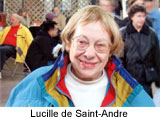
Once Upon A Time not so long ago I traveled to Tikal in
Guatemala and fell immediately in love with the Mysterious Maya.
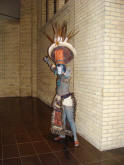 I was on assignment from The Montreal Star and the Guatemalans
suggested this side visit to the ongoing excavation of its
temples by archaeologists from the University of Pennsylvania. I
was at the picturesque Guatemala City airport at the ungodly
hour of six o’clock, in the morning. So after a breakfast of
bacon and eggs I boarded a ramshackle plane and I was on assignment from The Montreal Star and the Guatemalans
suggested this side visit to the ongoing excavation of its
temples by archaeologists from the University of Pennsylvania. I
was at the picturesque Guatemala City airport at the ungodly
hour of six o’clock, in the morning. So after a breakfast of
bacon and eggs I boarded a ramshackle plane and
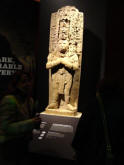 was offered a
seat on a large coil of rope in front of the toilet, but a
nearby military person, a colonel, offered to let me sit on his
armrest. As he looked quite friendly, I accepted. The rest of
the passengers were oil workers, I was told, and students or
researchers. was offered a
seat on a large coil of rope in front of the toilet, but a
nearby military person, a colonel, offered to let me sit on his
armrest. As he looked quite friendly, I accepted. The rest of
the passengers were oil workers, I was told, and students or
researchers.
 We debarked, had coffee with the researchers, and boarded a jeep
to drive into the dense green jungle. What met my eye was a
breathtaking vast plaza in which stood a red-haired girl
painting a temple. She smiled at us and said she was from
Vancouver. We debarked, had coffee with the researchers, and boarded a jeep
to drive into the dense green jungle. What met my eye was a
breathtaking vast plaza in which stood a red-haired girl
painting a temple. She smiled at us and said she was from
Vancouver.
We lost no time climbing up the steps to one of the forbidding
temples, clutching at the side rope and reaching its top, all
the while thinking of a priest dragging up its
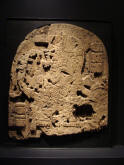 victim for the
blood sacrifice of cutting out his heart and throwing the body
down. I plugged some plants as souvenirs, imagining them
particularly rich growing in the ‘blood-soaked’ soil. This
caused an almost fatal accident on the way down as I could not
use one hand to clutch the rope but had to protect the plant in
the other hand. I smuggled them into Canada where they thrived
for years. victim for the
blood sacrifice of cutting out his heart and throwing the body
down. I plugged some plants as souvenirs, imagining them
particularly rich growing in the ‘blood-soaked’ soil. This
caused an almost fatal accident on the way down as I could not
use one hand to clutch the rope but had to protect the plant in
the other hand. I smuggled them into Canada where they thrived
for years.
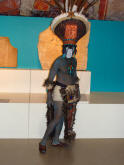 Which brings me to the exciting exhibition at the ROM, the Royal
Ontario Museum, now on view to April 2012. At first sight it’s
awesome to wander through the ancient Mesoamerican
Civilization’s Classic Period from 250 to 900 CE. (CE means
Common Era and replaces BC, before Christ). One wonders--what
brought this civilization to its zenith and what brought it
down? And what bearing has it on our life today? Which brings me to the exciting exhibition at the ROM, the Royal
Ontario Museum, now on view to April 2012. At first sight it’s
awesome to wander through the ancient Mesoamerican
Civilization’s Classic Period from 250 to 900 CE. (CE means
Common Era and replaces BC, before Christ). One wonders--what
brought this civilization to its zenith and what brought it
down? And what bearing has it on our life today?
For years people have wondered about the Mayas. It is believed
that the ancestors of the local Maya, which number a healthy 10
million today, had built magnificent cities, like Calakmul,
Tikal, Copan and colourful Palenque with temples and palaces,
ball courts and steam baths, secret writings,
 bloodletting
rituals and the important Maya calendar. Now after almost 200
years of exploration through the ruins of cities, we know more
about them and this exhibition is a journey into its Classic
Period, with its 250 stone and ceramic artefacts including large
sculptures, pots, masks and jewellery and a number of videos
expanding on the exhibitions’ themes, the deciphering of the
hieroglyphs and the Classic Maya cosmos. bloodletting
rituals and the important Maya calendar. Now after almost 200
years of exploration through the ruins of cities, we know more
about them and this exhibition is a journey into its Classic
Period, with its 250 stone and ceramic artefacts including large
sculptures, pots, masks and jewellery and a number of videos
expanding on the exhibitions’ themes, the deciphering of the
hieroglyphs and the Classic Maya cosmos.
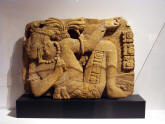 Depicted throughout are the forested plazas, temples, palaces
and tombs of its great cities where the king and the nobles
lived downtown and the farmers and workers on the fringes in the
suburbs in a vast territory of what’s currently part of Mexico,
Belize, Guatemala, Honduras and El Salvatore. Many of the
artefacts are shown for the first time in Canada, co-produced by
the ROM, the Canadian Museum of Civilization in collaboration
with the National Institute of Anthropology and History. Depicted throughout are the forested plazas, temples, palaces
and tombs of its great cities where the king and the nobles
lived downtown and the farmers and workers on the fringes in the
suburbs in a vast territory of what’s currently part of Mexico,
Belize, Guatemala, Honduras and El Salvatore. Many of the
artefacts are shown for the first time in Canada, co-produced by
the ROM, the Canadian Museum of Civilization in collaboration
with the National Institute of Anthropology and History.
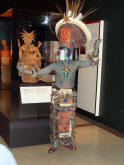 The Mayas diverse environment covered almost 400,000 km, with
mountains in the southern region, tropical forest, central
lowland, also forested and drier northern limestone plain. The Mayas diverse environment covered almost 400,000 km, with
mountains in the southern region, tropical forest, central
lowland, also forested and drier northern limestone plain.
Farmers used hunting, fishing, gathering and raising animals
producing such foods as maize, beans, squash, bees, and raising
dogs, turkeys and ducks. Then, of course, the famous chocolate
drink.
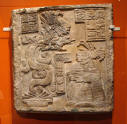 What was interesting was that unlike the Aztecs and the Incas
the Mayans never formed a monolithic or overriding empire but
had city states that were often in conflict with each other. The
people believed in their rulers but if they didn’t like a city
they simply moved away and looked for another one. What was interesting was that unlike the Aztecs and the Incas
the Mayans never formed a monolithic or overriding empire but
had city states that were often in conflict with each other. The
people believed in their rulers but if they didn’t like a city
they simply moved away and looked for another one.
Near the beginning of the ninth century the classica Maya
society began to collapse over time because people lost faith in
their rulers, overpopulation, increasing warfare, environmental
degradation and drought.
 What is hopeful are traits of the Maya culture in contemporary
Maya communities with its languages and rituals. The much
discussed cycle of the Mayan calendar (called “the long count”)
ends December 21, 2012. Is it the Apocalypse that Europeans and
Americans have long expected? “Nein,” according to a German
expert. Sven What is hopeful are traits of the Maya culture in contemporary
Maya communities with its languages and rituals. The much
discussed cycle of the Mayan calendar (called “the long count”)
ends December 21, 2012. Is it the Apocalypse that Europeans and
Americans have long expected? “Nein,” according to a German
expert. Sven
Gronemeyer of La Trobe University in Australia says his decoding
of a Mayan tablet with a reference to 2012 means a transition to
a new era.
One of the highlights is a large limestone Tablet of the
Warriors from Temple XVII depicting a captured warrior kneeling
in front of a king from Palenque. Its three panels have been
brought together for the first time.
|
|













